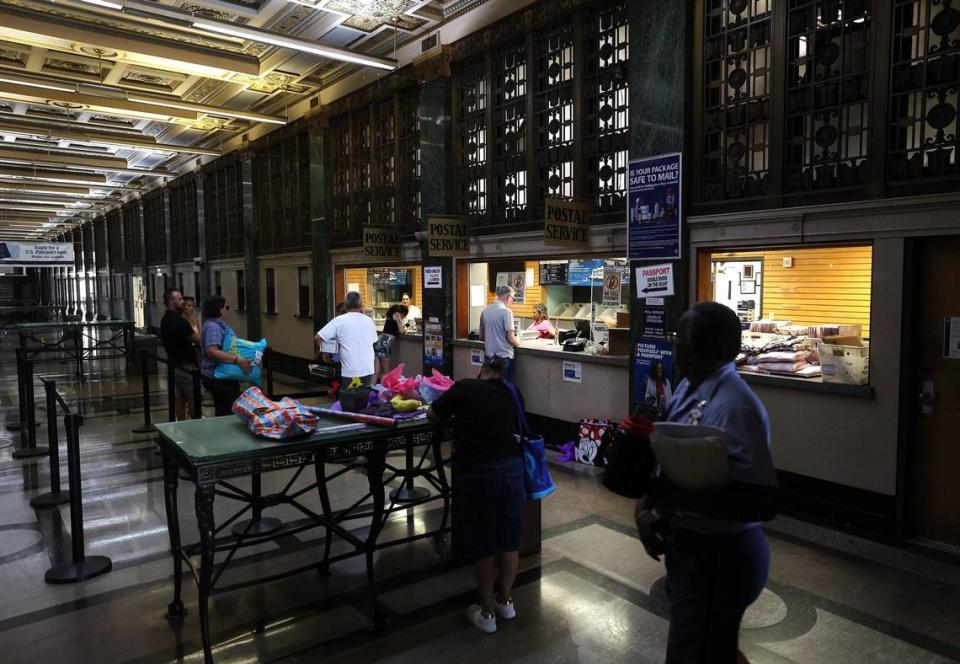Deep inside Fort Worth’s historic post office, rooms are frozen in time. Take a look
Inside Look stories give Star-Telegram subscribers exclusive sneak peeks and behind-the-scenes reporting. Story suggestion? Editors@star-telegram.com.
Walking through Fort Worth’s Post Office Central is like taking a step back in time.
Towering columns usher customers into a cavernous lobby decorated with patterned stone floors, marble-covered walls and huge bronze grilles with eagles covering the upper windows. Even the ceiling bears ornate plaster and gold leaf decorations.
The magnificent three-story building at 251 W. Lancaster Ave., near the T&P Station, offers visitors a glimpse back to a time when the U.S. Postal Service was a critical part of everyday life.
So many people have used the lobby’s mail slots that there are depressions on the floor in front of them.
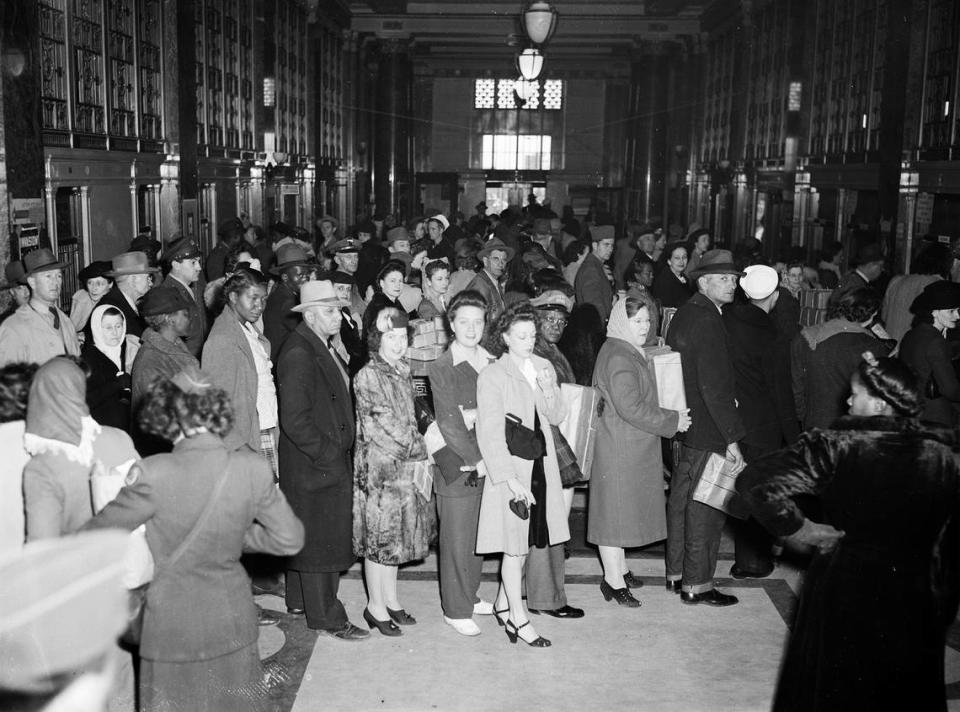
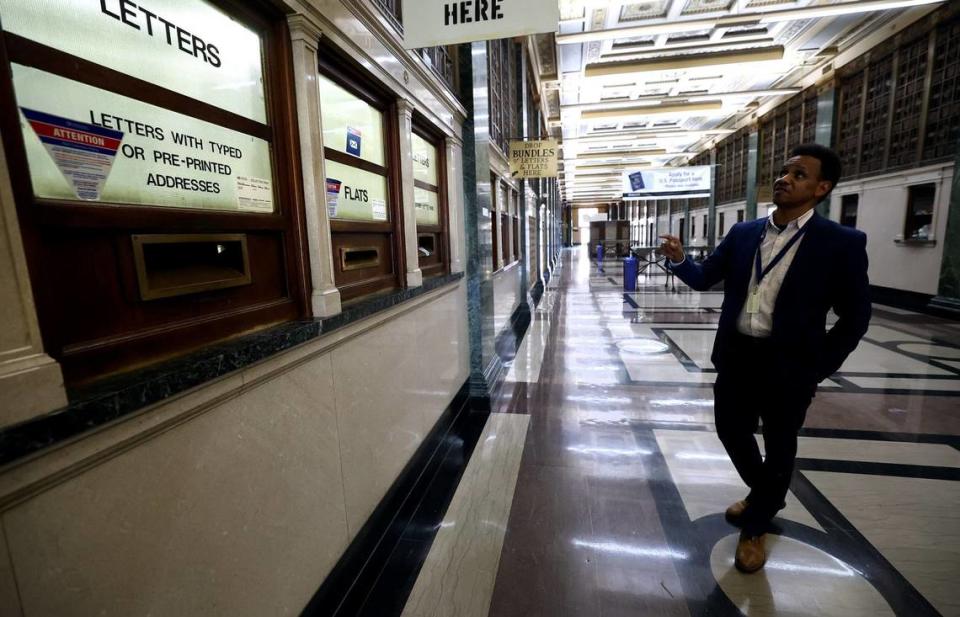
Opened in February 1933, it’s the oldest post office in Tarrant County still in use. Construction began in August 1931. Back then, the project cost over $1.2 million, or more than $25 million in today’s dollars.
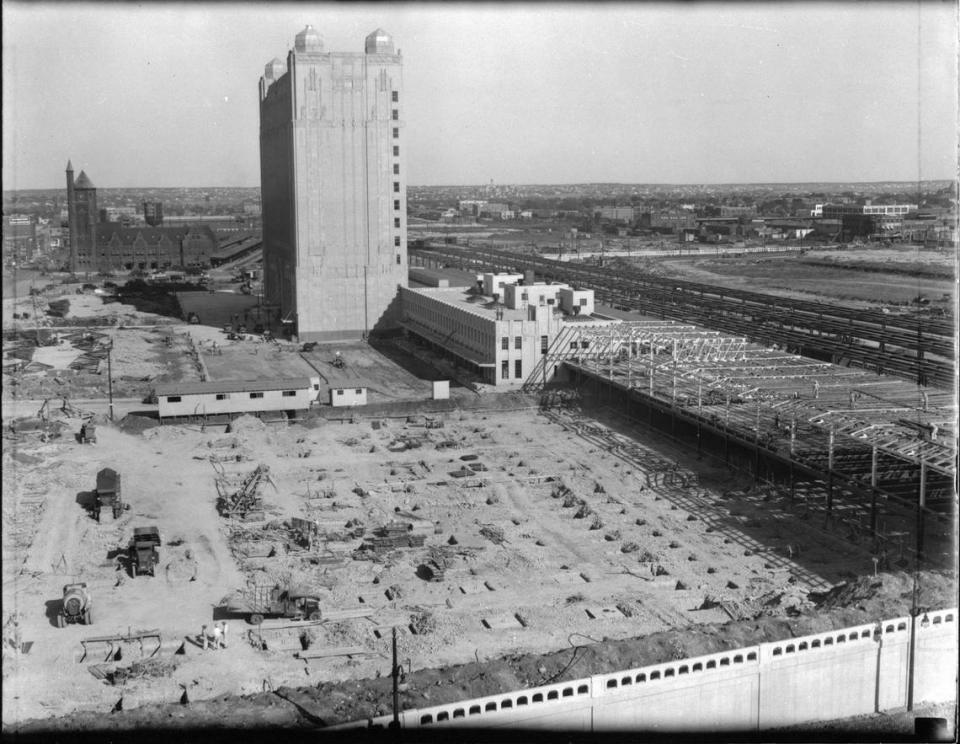
A few weeks before the post office opened, the Star-Telegram gave readers an inside look at what was then one of the city’s biggest public works projects, filling multiple pages of valuable print space to a story with numerous photos.
Over 2,000 post office boxes line the walls of the lobby. Errik Ford, the location’s station manager, said all of them remain active.
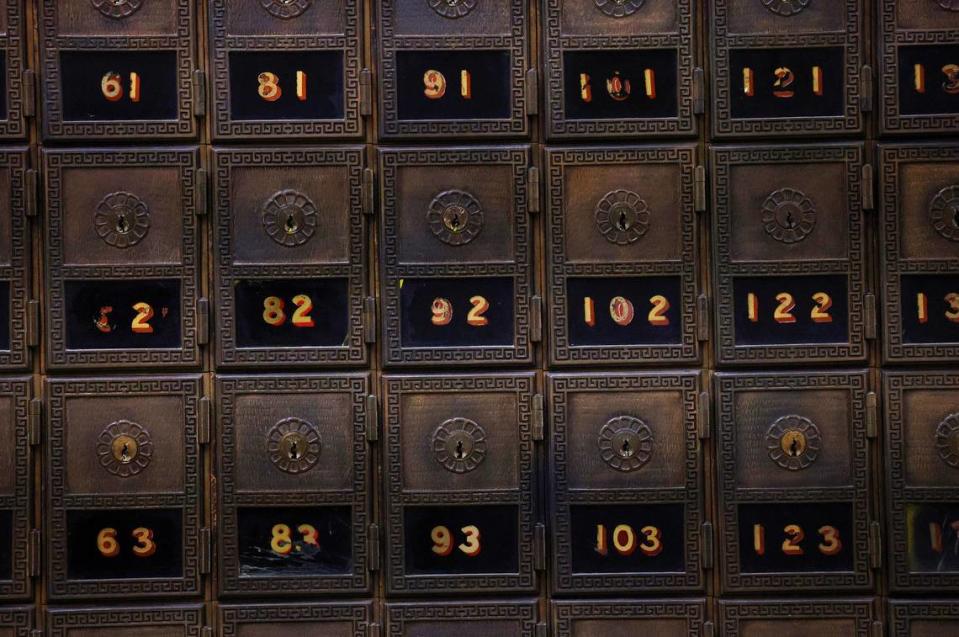
Ford has been a postal service employee for 28 years, and has spent about 12 years at what’s also known as the Fort Worth Main Post Office . He said the building is frequented by many, including downtown residents, other customers and people who visit simply to take pictures.
“Downtown is proud of this place,” Ford said.
The city’s postmaster used to work from the building, but the position relocated over a decade ago. The postmaster’s office still remains, but is closed to the public and used for storage.
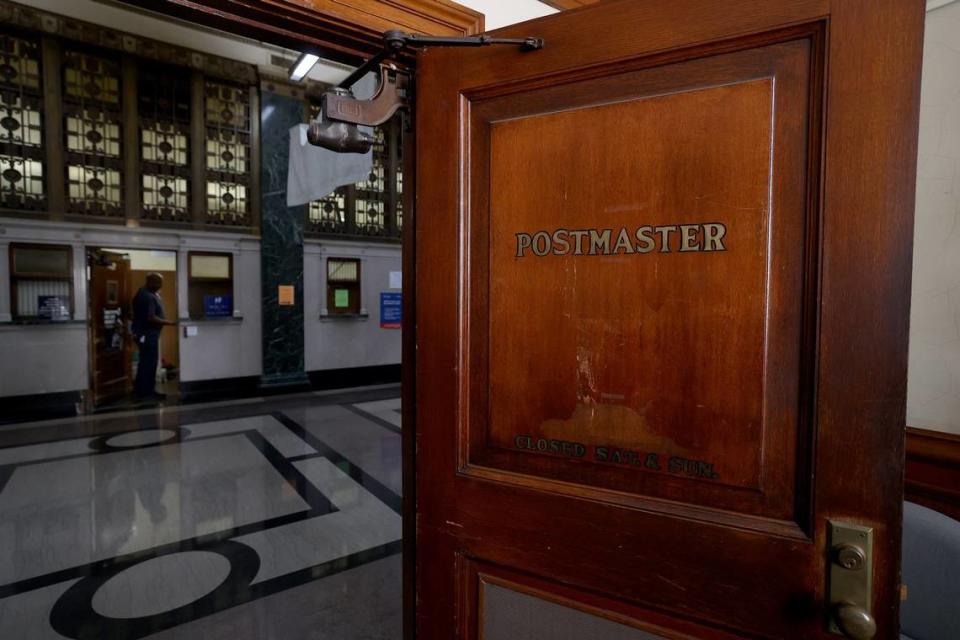
Inside, its walls are decorated with six large murals painted as part of the New Deal’s Public Works of Art Project. The murals depict mail delivery throughout history, from stagecoaches to airmail; they were painted by Dwight Holmes and W.H. Baker, a former Star-Telegram artist.
The dedicated passport office, which can process up to 150 passport applications in a day, is a modern addition. The space was converted from a postal museum about 15 years ago, but artifacts and photos from the building’s past are still on display in windows throughout the lobby.
Many of the building’s original finishings, including the glass-topped bronze writing tables in the lobby, have survived. Marble decorating the interior came from Texas, Tennessee and as far as Vermont. One wall still bears a plaque dedicated to Confederate Civil War veterans installed by the Daughters of the Confederacy a few weeks after the building opened.
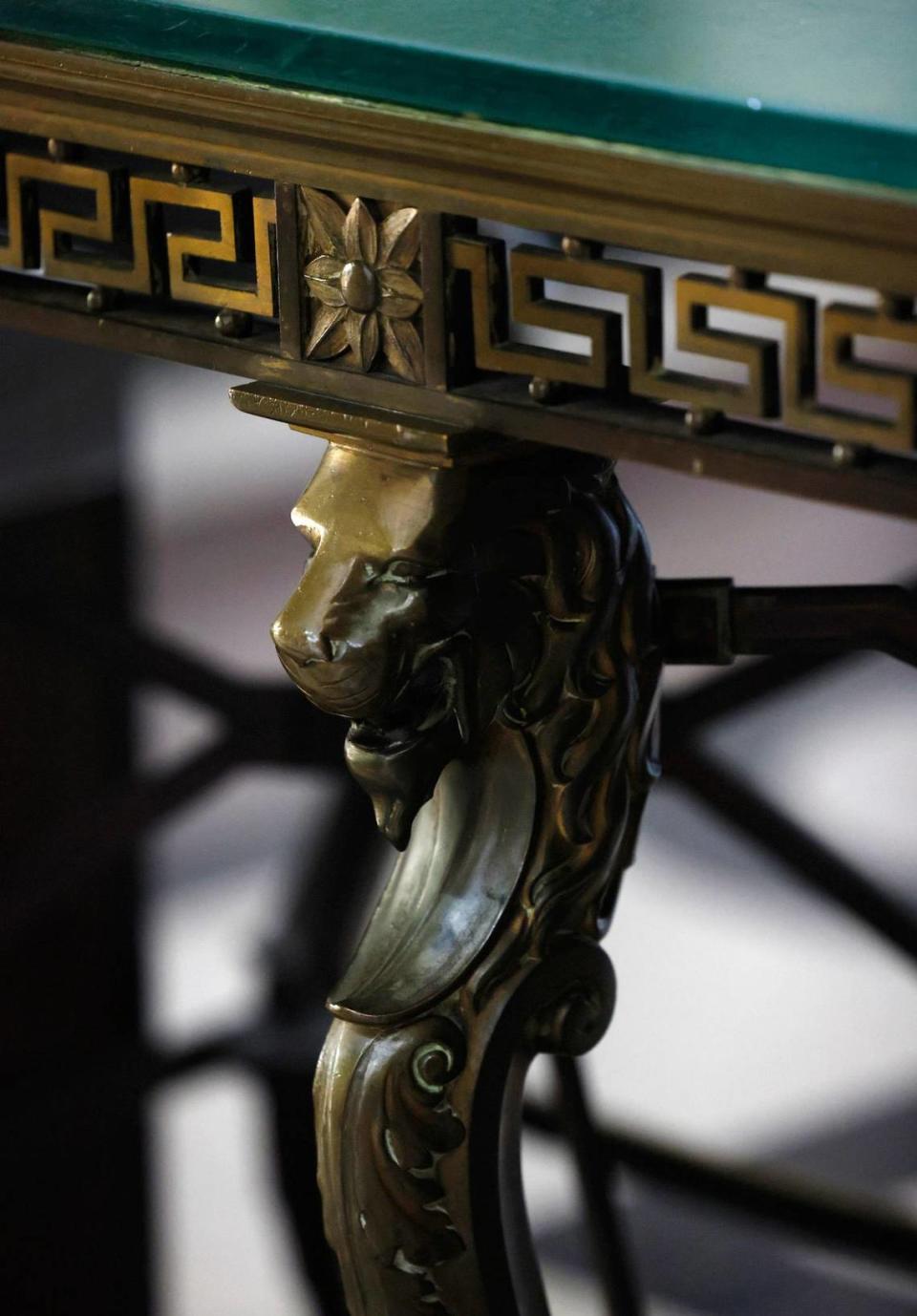
A dedicated maintenance team is a large part of why the building is in such good condition today. Ford said the man who worked on the revolving doors, which are original to the building, recently retired after 35 years.
Even behind the scenes, original tools are still in use. Dozens of nutting trucks — carts used to move large boxes of mail — are in the mail sorting room. Ford said the carts’ wooden platforms are replaced from time to time, but most have held up for over 70 years.
“They don’t make it like they used to,” Ford said.
The post office’s original safe sits empty in the mail sorting area, replaced decades ago by newer models. With its twin combination dials and chipped Great Seal of the United States, the safe resembles a prop from an old Western movie.
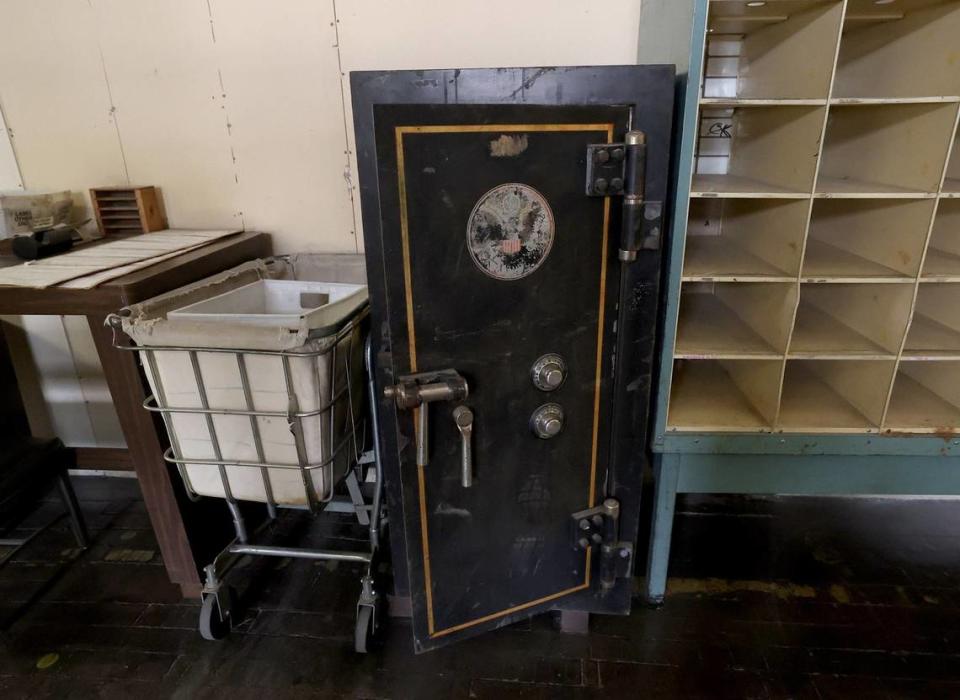
The basement isn’t as picturesque as public areas, but it’s a treasure trove of history.
Filing cabinets and desks of all shapes and sizes are stacked like Jenga blocks as far as the eye can see. Yellow fluorescent lights cast the labyrinth in an eerie glow, with most of their bulbs long burnt out. Big blue mail collection boxes from different eras dwarf nearby chairs fit for a 1960s office. A few dozen fire hydrants on the floor cluster around a desk topped with a dusty cathode ray television (i.e. definitely not a flat screen).
Aside from storage, the basement also has a classroom the postal service uses to train new employees.
Through a doorway and down a few stairs is the original boiler, which still heats the building in winter. The iron behemoth was made decades ago in Titusville, Pennsylvania, where the old ironworks has since been converted into a bar and restaurant.
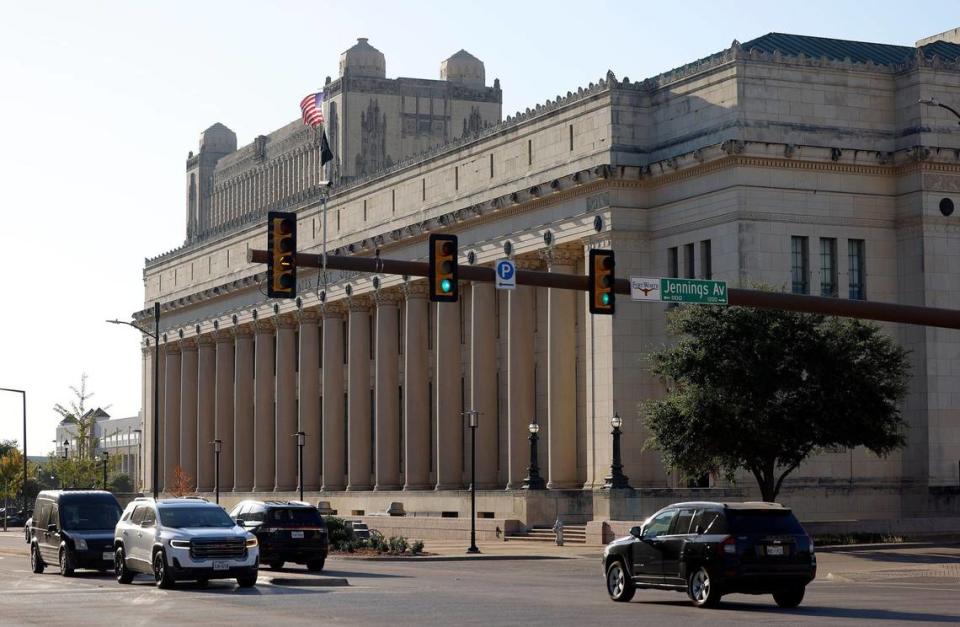
During a restoration of the building in 2015, parts of the interior and the entire exterior were cleaned. Asbestos has also been removed from the building. Though grime is starting to collect again in a few spots on the limestone facade, it still gleams in the bright afternoon sunlight.
“They came through and really did the building some justice,” Ford said.
The steps outside are made of Texas granite. The tops of the facade’s columns are decorated with carved longhorn and shorthorn cattle, an ode to the importance of Fort Worth’s cattle industry to the local economy.
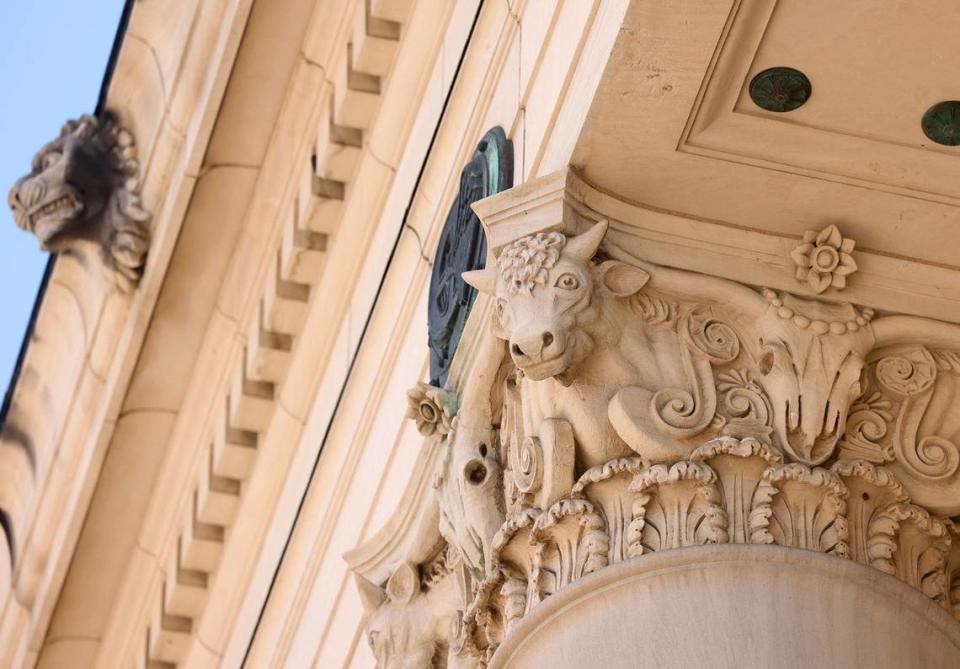
The post office was designated a Texas Historic Landmark in 1980. In 1985, it was added to the National Register of Historic Places.
The post office is an iconic example of Beaux Arts architecture with a Western flair. The Beaux Arts style blends elements of classic Greek and Roman architecture, like columns and arches, with Renaissance elements.
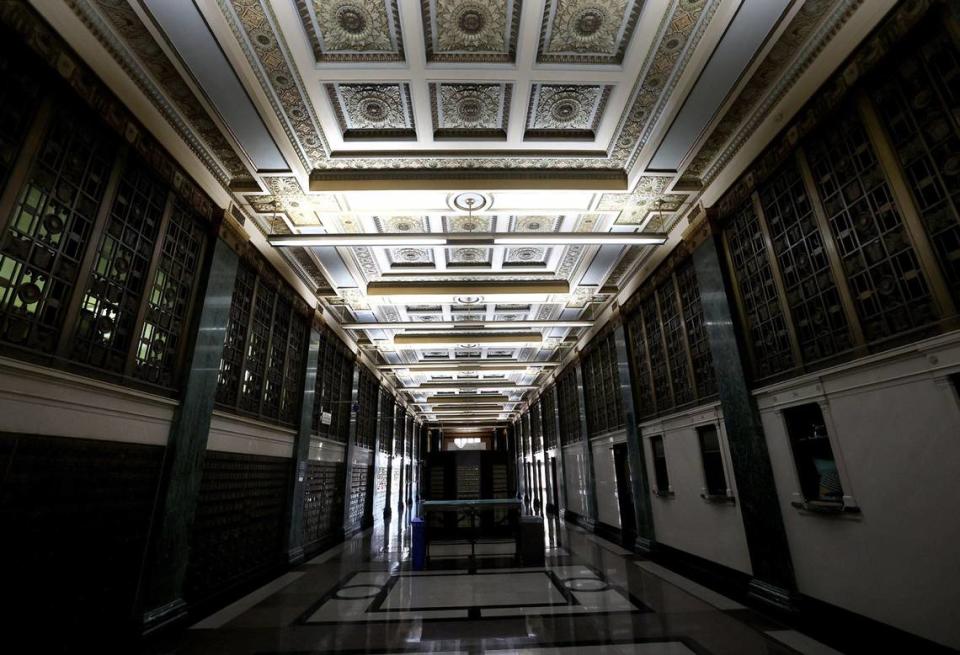
The building’s architect, Wyatt C. Hedrick, designed a number of iconic Fort Worth buildings, including Will Rogers Memorial Center and the T&P terminal and warehouse.
Originally from Virginia, Hendrick became a successful businessman in Texas. He was known to have a few quirks — though he owned multiple Cadillacs, he preferred to get rides from just about anyone, including employees, salesmen and construction executives.
The post office was designated as a fallout shelter during the Cold War, and its facade still bears a fallout shelter sign. Ford doesn’t know what became of the shelter, but an old sign lingers in a basement storage area.
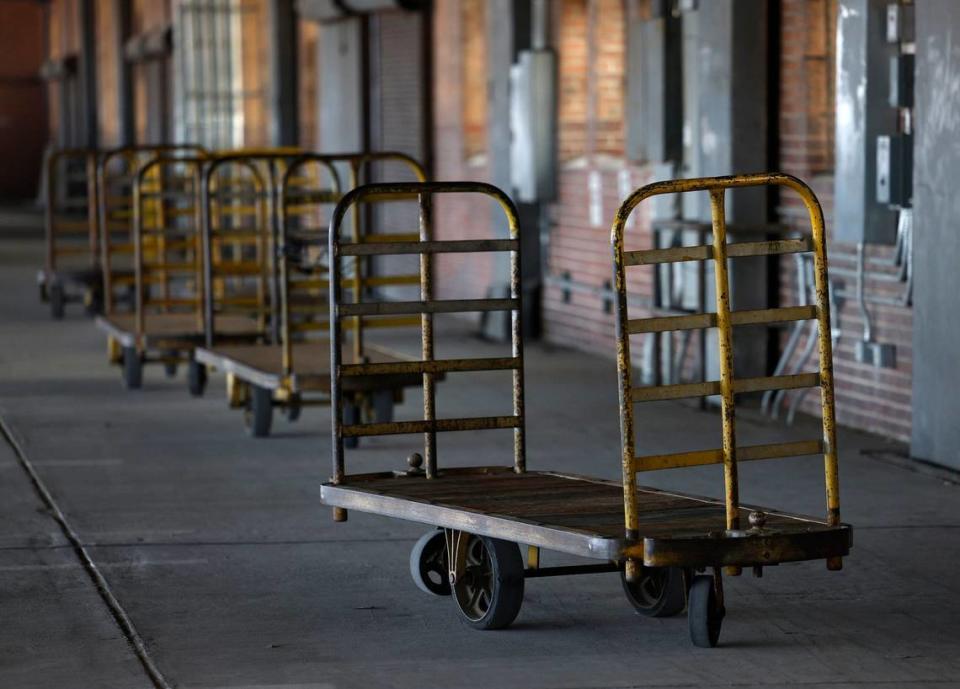
The site was chosen for its proximity to the neighboring Texas & Pacific Railroad Co. facilities, which opened in 1931 and handled much of Fort Worth’s mail. Busy train tracks still run directly behind the building today.
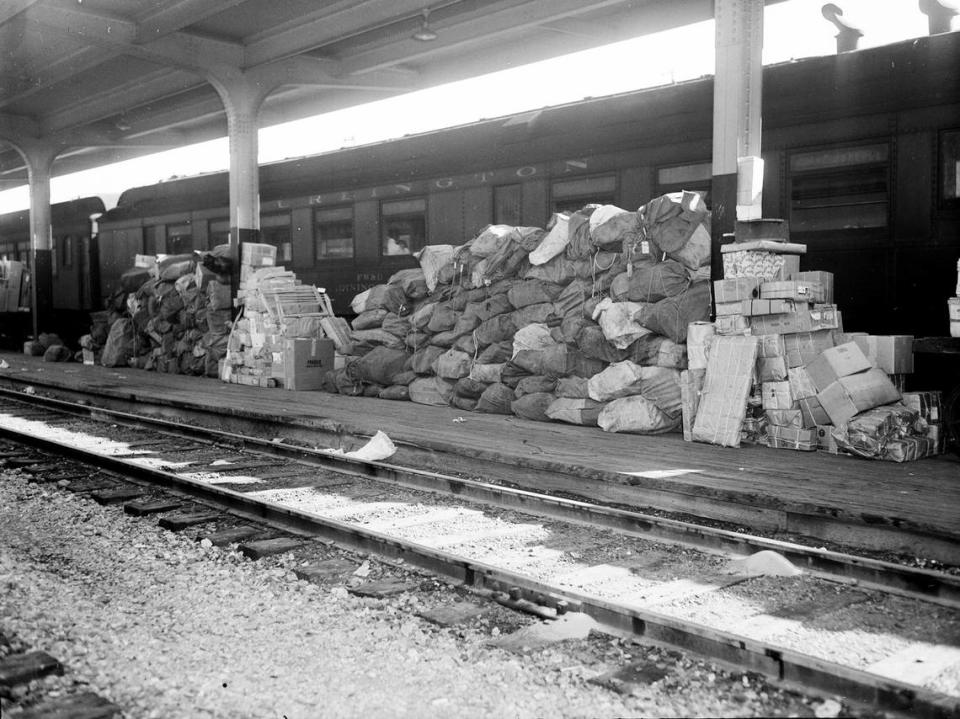
When transporting mail by rail became unreliable, the postal service switched to airmail, eliminating the usefulness of the Fort Worth location’s proximity to the railroad. As the population grew, a new, larger hub was needed.
At its height, the downtown post office had about 300 employees and was the main distribution center for Fort Worth, but times have changed. The region’s current distribution center employs roughly 800 people. Old truck bays from the downtown location’s days as a distribution center are now used for storage.
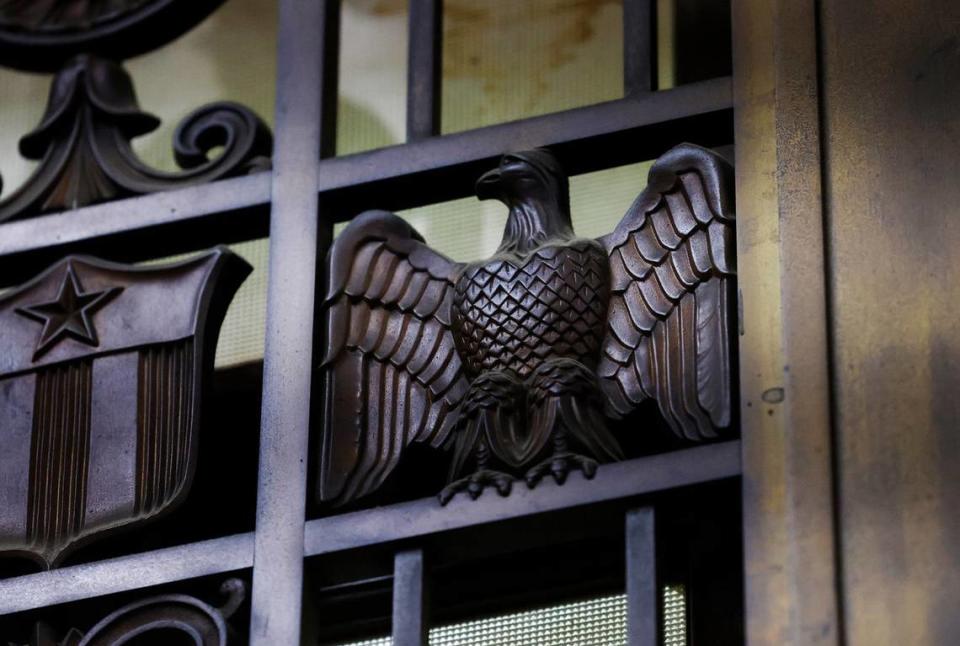
Interstate 30 was built in 1958, cutting the post office and the T&P buildings off from downtown with an overpass over Lancaster Avenue. When the Texas Department of Transportation proposed widening the highway in the 1980s, the building’s future was thrown into jeopardy. Plans for the project revealed an expanded interstate would come within 20 feet of the post office’s facade, sparking strong opposition from the community.
I-30 was torn down in 2001, returning West Lancaster to its former role as a major downtown corridor. The interstate was relocated behind the post office and T&P buildings; work on the project finished in 2005.
The post office was considered as a potential city hall in the early 2000s, but the postal service ultimately decided not to sell the building. Today, the West Lancaster property, which includes the post office and parking lot extending to Main Street, is worth over $24 million, according to county appraisal records.

Still, the historic character of the well-kept historic building has attracted new neighbors. The United States Postal Inspection Service, a federal law enforcement agency, has commandeered the second floor and a conference room off of the lobby. Other government entities are eyeing space on the third floor, though none have committed to moving in.
After almost 30 years with the postal service, Ford said his favorite part of the job is how his work connects people.
“Without the post office, the world stops,” Ford said.
